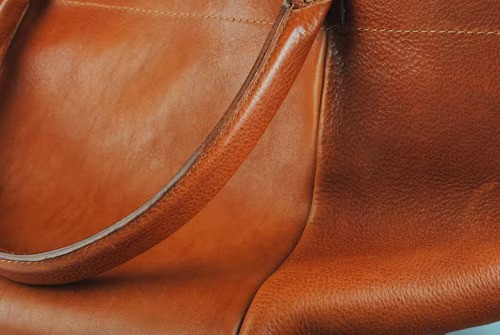The Timeless Allure of Tooled Leather Handbags
There’s something undeniably special about a tooled leather handbag. Unlike mass-produced accessories, each piece tells a story a craftsman’s careful hands carving intricate patterns into supple leather, creating a one-of-a-kind masterpiece. But with prices ranging from affordable finds under $100 to luxury designs over $500, you might wonder: Are tooled leather handbags really worth the investment?
The short answer? Absolutely if you know what to look for.
Why Tooled Leather Stands Out
Tooling isn’t just decoration; it’s a centuries-old art form. Unlike stamped or embossed leather (where designs are pressed mechanically), hand-tooled leather involves skilled artisans painstakingly carving and molding each detail. This makes every bag unique whether it’s a Western-style floral design, a bohemian fringe piece, or a modern minimalist clutch.
However, there’s an important caveat: quality varies dramatically across so-called ‘tooled’ leather goods. Some brands cut corners with cheap imitations (more on spotting fakes later). Others prioritize ethical sourcing and traditional techniques factors that affect durability, aesthetics, and even resale value.
What This Guide Covers
In this deep dive, we’ll explore:
- The real differences between tooled, stamped, and embossed leather (hint: it’s not just about looks).
- biggest trends, from micro-tooling to bold colors (move over, basic brown).
- Durability secrets why a well-made tooled bag can outlast fast-fashion purses.
- Ethical considerations, like supporting fair-trade artisans vs. mass-produced brands.
We’ll also debunk myths (“Does tooling weaken the leather?”) and share styling hacks to make these statement pieces work for everyday wear.
A Quick Story: My First Tooled Leather Bag
Several seasons back, I stumbled upon an aged hand-tooled leather crossbody bag at a local flea market The seller swore it was 40 years old, yet it looked pristine no cracks, just a rich patina. Fast-forward to today: It’s survived rain, spills, and my habit of overstuffing it. Meanwhile, my cheaper stamped leather bag peeled within months.
That’s the magic of genuine tooled leather: It ages like fine wine. But to unlock that longevity, you need to choose wisely and care properly.
What’s Ahead
Ready to find your perfect piece? Let’s start with the key differences between tooled and other leather types because knowing what you’re buying is half the battle.
(Next section teaser: “Tooled vs. Stamped Leather: Why the Difference Matters”)
Tooled vs. Stamped vs. Embossed Leather – The Truth Behind the Labels
Not all leather detailing is created equal. If you’ve ever wondered why some “tooled” handbags cost $50 while others run $500, the secret lies in how the patterns are made. True hand-tooled leather involves artisans carving designs by hand using specialized tools, creating depth and texture that catches both light and fingertips. Each piece becomes unique – you might even spot slight imperfections that prove its handmade origin.
Stamped leather, on the other hand, uses metal presses to imprint patterns quickly and uniformly. While more affordable, these lack the dimensionality of true tooling and often wear down faster at the edges. Embossed leather falls somewhere in between, sometimes using heat or synthetic materials to mimic the tooled look without the craftsmanship.
Pro tip: Run your fingers across the design. Authentic tooling will have noticeable ridges and valleys, while stamped patterns feel flatter. This difference affects not just aesthetics but longevity – a well-made tooled bag can become a family heirloom, while stamped alternatives might need replacing every few seasons.
Why Tooled Leather Ages Like Fine Wine
The magic of quality tooled leather lies in its ability to develop character over time. Unlike synthetic materials that deteriorate, genuine vegetable-tanned leather (the gold standard for tooling) actually improves with age. As the natural oils interact with your hands and the environment, the bag develops a rich patina – that coveted glow that makes vintage pieces so desirable.
This aging process happens because traditional tooling uses full-grain leather, keeping the strongest part of the hide intact. The carved patterns don’t weaken the structure when done properly by skilled craftsmen. In fact, the compression from tooling can make high-wear areas like straps even more durable.
2025’s Hottest Tooled Leather Trends
This year, tooled leather is breaking free from its Western roots. While classic floral and geometric patterns remain popular, we’re seeing exciting new directions. Micro-tooling showcases exquisitely fine, intricate patterns ideal for lovers of contemporary minimalist style Colorful tooling has arrived too – think deep indigo carvings on natural leather or even metallic accents for evening wear.
Sustainable tooling is another growing movement. Eco-friendly artisans are increasingly turning to natural plant dyes and repurposed leather materials to attract environmentally aware shoppers. And don’t overlook mixed-media pieces that combine tooled leather with woven textiles or metal accents for contemporary flair.
Styling Your Statement Piece
Uses different sentence structure. A bold Western-style bag can elevate simple jeans and a white tee, while a subtly tooled clutch adds intrigue to little black dresses. For daytime, try pairing a tooled crossbody with flowy boho dresses or tailored neutrals – let the bag be your outfit’s focal point.
Proportion matters too. Petite frames might prefer smaller bags with finer tooling, while larger totes with dramatic patterns complement taller figures. And don’t be afraid to mix textures – a tooled leather bag looks fantastic with denim, knitwear, or even sleek satin.
The Ethics of Tooled Leather
Behind every beautiful bag lies an important question: Who made it, and under what conditions? True artisan tooling supports traditional craftspeople, often in developing countries where these skills have been passed down for generations. Some commercial brands undermine this artisanal legacy through mass-produced knockoffs.
Seek out companies that openly share their manufacturing locations and ensure artisans receive proper compensation. Unfortunately, some large-scale producers devalue this craft with inferior replicas. Vegan shoppers should note that while synthetic “tooled” options exist, they lack the durability and aging potential of genuine leather.
Custom vs. Ready-Made – Finding Your Perfect Match
The custom route offers unparalleled personalization – imagine having your initials or a meaningful symbol tooled into your bag. While this typically costs more (starting around $300), you’re investing in a truly one-of-a-kind piece. Ready-made options from reputable brands offer more affordability (usually $80-$200) while still providing quality craftsmanship.
Consider your priorities: Custom bags take time (often 4-8 weeks) but become instant heirlooms. Ready-made pieces offer instant gratification and easier returns if the style doesn’t work for you. Many Etsy artisans strike a balance by offering semi-custom options where you can choose from existing designs in different colors.
Care That Honors the Craft
Your tooled leather bag deserves proper care to maintain its beauty. Start by keeping it away from direct heat and prolonged moisture. For gentle cleaning, start with a lightly moistened soft cloth, then apply a premium leather conditioner always perform a patch test on a hidden section before full application.
To clean the intricate carved patterns, lightly brush a soft-bristled toothbrush along the grooves to lift away accumulated dust.. Stuff your bag with tissue paper when storing to maintain its shape, and keep it in a breathable dust bag (never plastic). With proper care, a quality tooled bag can look better in a decade than it did on day one.
Where to Shop with Confidence
For authentic tooled leather, start with artisan marketplaces like Etsy (filter for “handmade”) or specialty retailers like Santa Fe Trading Company. Physical shoppers should look for leather fairs or Western wear stores. Before making your purchase, carefully scan customer feedback for comments about craftsmanship and genuine materials.
Exercise caution with suspiciously low prices – genuine tooled leather requires skilled, time-consuming craftsmanship. Ask sellers about the leather source, production methods, and return policies before purchasing. Many quality makers offer authenticity guarantees or craftsmanship warranties.
Your Tooled Leather Questions Answered
Q: Can tooled leather get wet?
A: Light rain won’t ruin quality tooled leather, but heavy exposure may cause water spots. Should moisture occur, pat dry gently and let it dry slowly in a cool, dry space.
Q: How can I tell if tooling is handmade?
A: Look for slight asymmetries and depth variations – machine-made patterns appear too perfect.



2 thoughts on “Are Tooled Leather Bags Worth It? Durability Secrets & Best Picks”